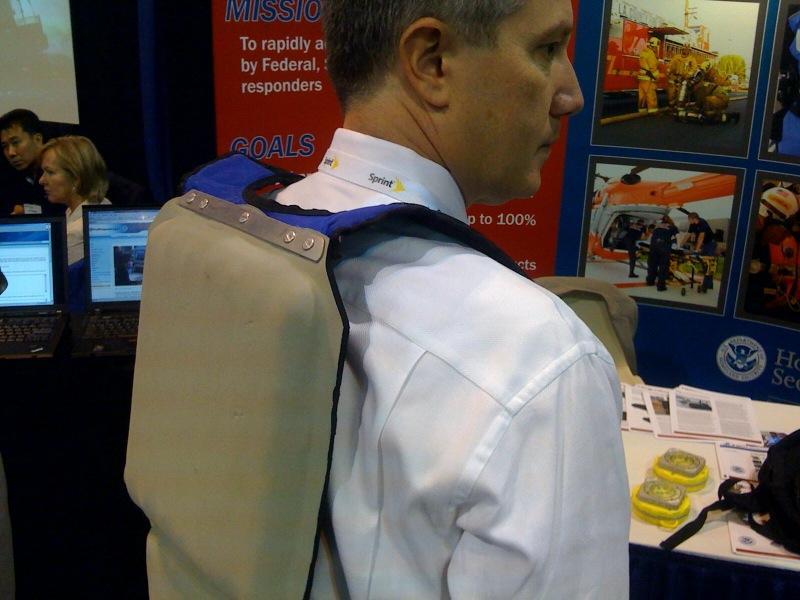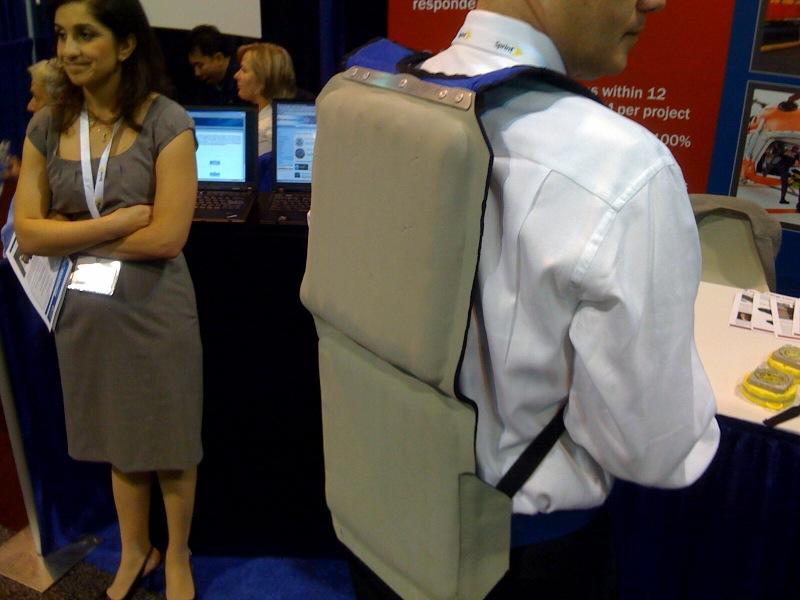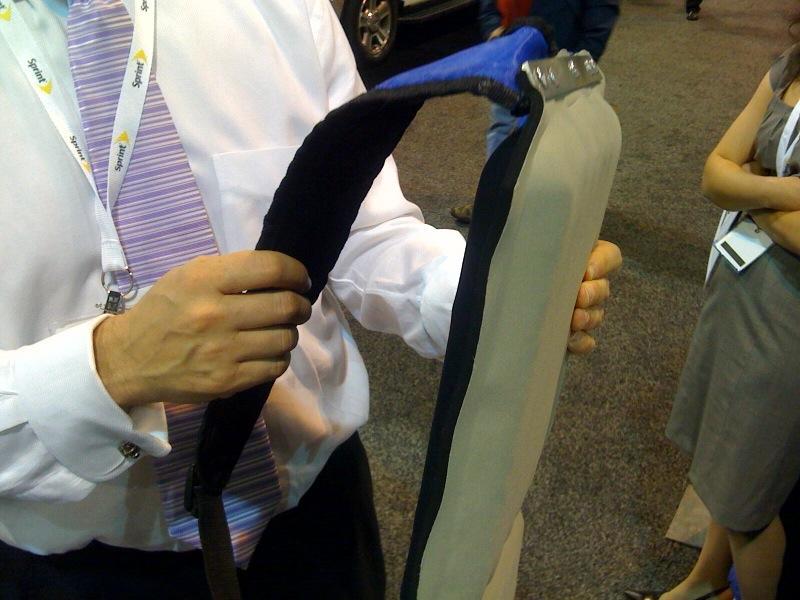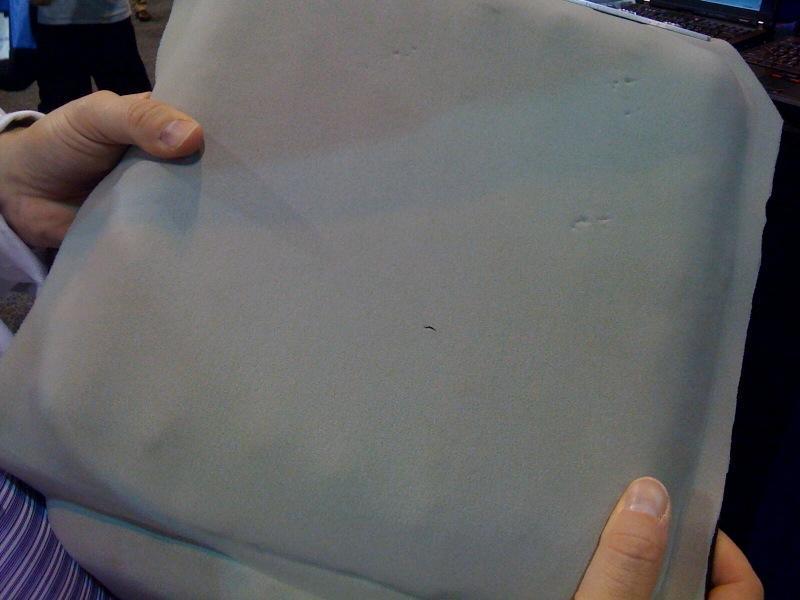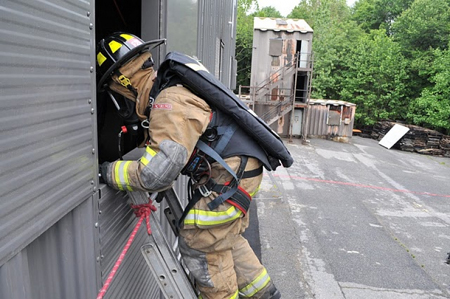 |
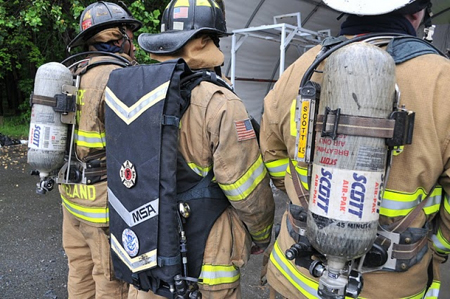 |
FIRST FIELD TEST OF THE NEW FLAT PACK FIREFIGHTER SCBA HELD IN PRINCE GEORGES COUNTY, MARYLAND BY THE IAFF The International Association of Fire Fighters (IAFF), and the Prince George痴 County, MD, Fire/EMS Department conducted a field test of a new self-contained breathing apparatus (SCBA). 典hese important field tests give us the information we need to ensure that this cutting-edge technology is safe, reliable and ready to be deployed. This is one of the most significant health and safety projects the IAFF has ever undertaken, and this new SCBA technology will improve the safety of fire fighters on the frontlines,� IAFF General President Harold A. Schaitberger said. Prince George痴 County fire fighters participated in the field test, held on Tuesday, May 18, 2010, at the department痴 training academy in Cheltneham, MD. They were joined by 12 fire fighters and four law enforcement officers from surrounding municipalities, including Washington, D.C., Fairfax County and Montgomery County, in rigorously testing the new SCBA. Firefighters went through several evolutions with traditional SCBA and then repeated the same evolution with the flat pack SCBA. After each evolution firefighters completed an evaluation form describing the pros and cons of the SCBA. 展e池e proud to be part of this important project to improve a piece of equipment that is so vital to fire fighters in Prince George痴 County and the rest of the world,� Prince George痴 County Fire/EMS Department Fire Chief Eugene Jones said. The IAFF, under contracts with the U.S. Department of Homeland Security, designed the new SCBA, and global safety equipment manufacturer MSA, based in Pittsburgh, Pa., was selected to build a prototype of the new apparatus. The IAFF痴 next-generation SCBA prototype will rely on pressure-vessel technology, which promises to make fire fighting breathing apparatuses smaller, lighter and more efficient than SCBA currently in use. MSA was selected by the IAFF to build the prototype after an extensive solicitation process. The IAFF received more than $2.7 million from the Department of Homeland Security痴 Science and Technology Directorate (DHS) to fund research and development of a next-generation SCBA. As part of its development efforts, the IAFF and DHS Science and Technology Directorate worked with Vulcore Industrial LLC under the DHS contract to create the new pressure-vessel technology to make SCBA lighter with a greatly reduced profile when compared to current SCBA cylinders. The IAFF then selected MSA to build the final prototype, which is expected to demonstrate the superiority of the new pressure-vessel technology that would replace the single-air cylinder design of conventional fire fighting breathing apparatus. The new technology, referred to as a 吐lat pack,� uses a special high-temperature lining in place of conventional aluminum liners used in current SCBA cylinders. These linings are then braided with Kevlar and wound with pre-impregnated carbon fiber. The entire array is inside a soft, flexible cover, allowing the design to flex horizontally and vertically at the connection points. This new SCBA technology will be available to fire departments once extensive testing is complete. |
